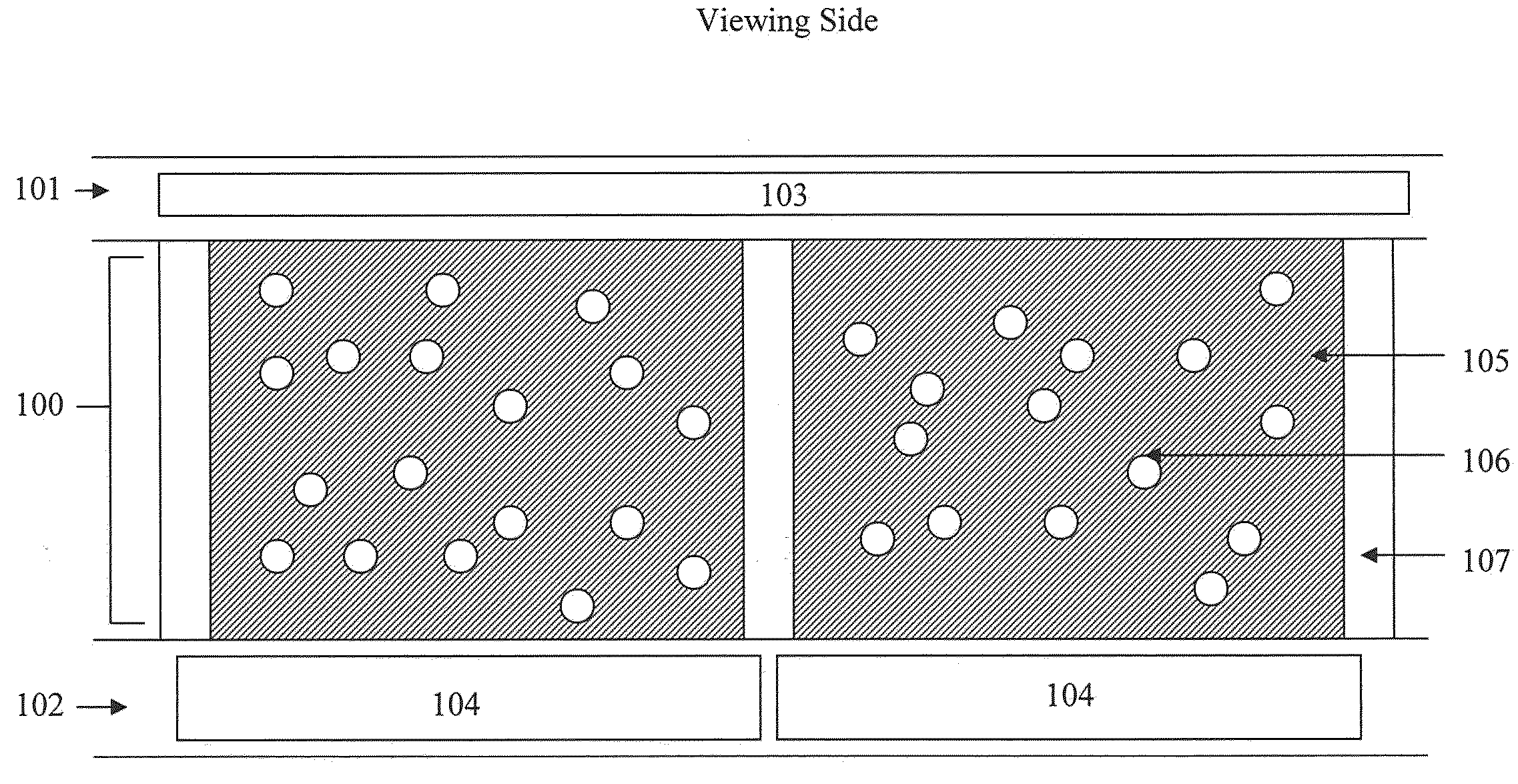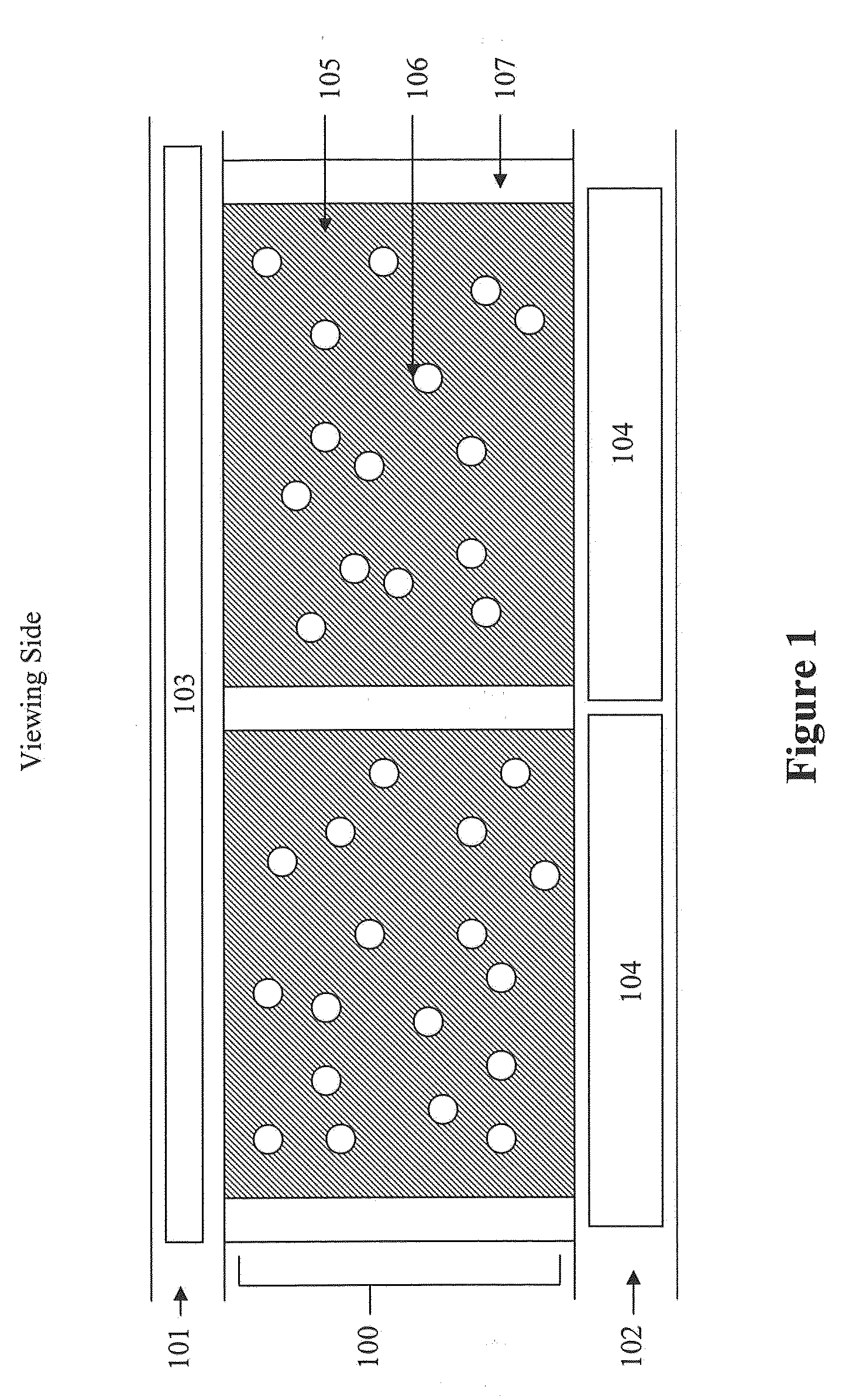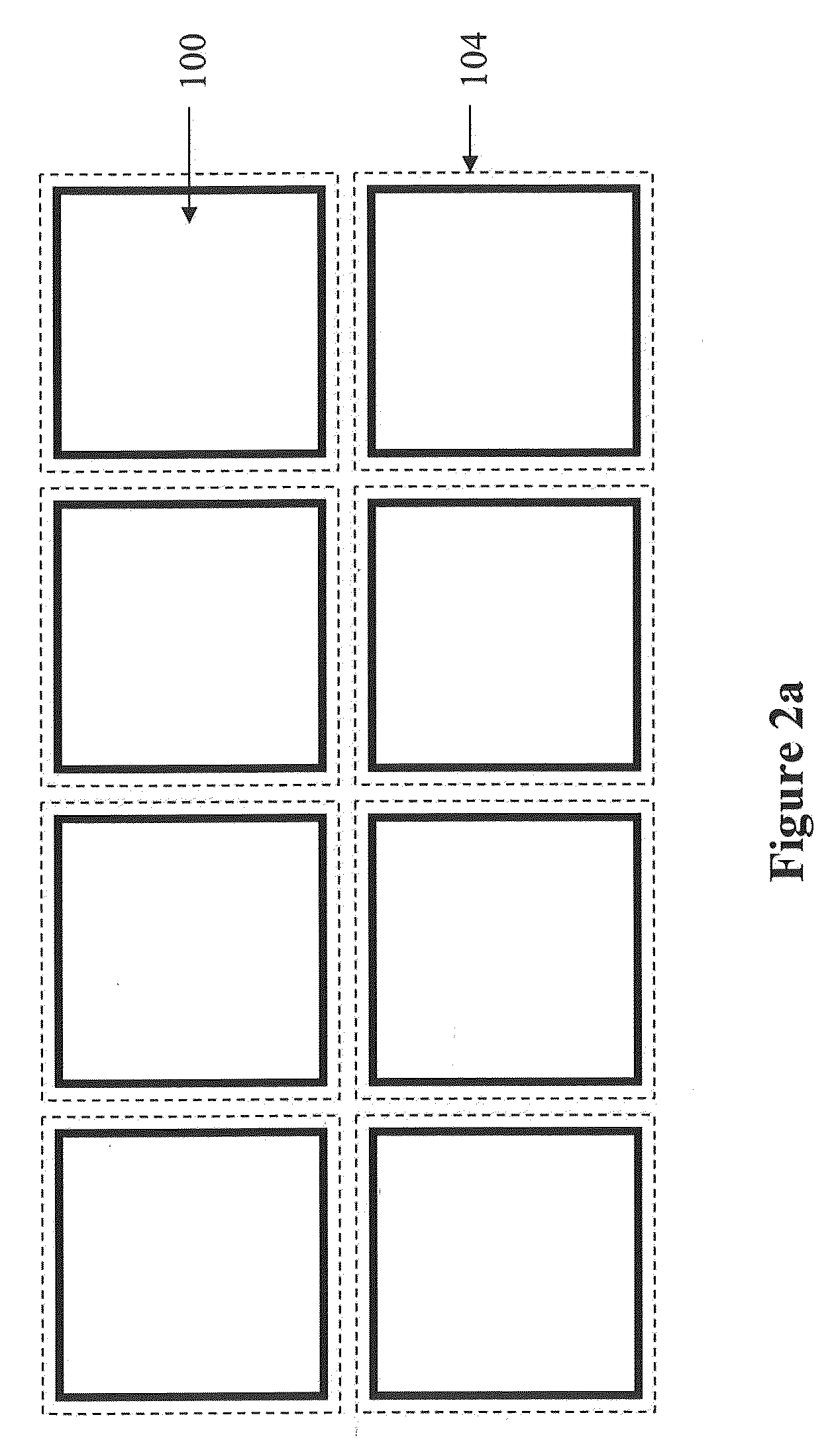Multicolor display architecture using enhanced dark state
a multi-color display and enhanced dark state technology, applied in the field of multi-color display architecture, can solve the problems of inacceptable display device choice, poor quality of white state, and inability to meet the needs of users, and achieve the effects of simple fabrication, reduced manufacturing costs, and high quality
- Summary
- Abstract
- Description
- Claims
- Application Information
AI Technical Summary
Benefits of technology
Problems solved by technology
Method used
Image
Examples
example
[0062]This example compares the multiple color states displayed by the present invention against the multicolor states displayed utilizing color filters.
[0063]FIG. 8a shows the five color states (white, red, green, blue and black) displayed by the present invention. Each pixel has three sub-pixels. The sub-pixels are microcups filled with display fluids comprising white pigment particles dispersed in a red, green and blue solvent, respectively. The five color states are achieved as described above. In the one particle system, the solvents are of dark colors.
[0064]FIG. 8b shows the five color states displayed utilizing the color filters. Each pixel, in this case, has four sub-pixels. One of the sub-pixels is capable of displaying only black / white color states. The other three sub-pixels have color filters of red, green and blue placed on top to display the red, green and blue colors, respectively.
[0065]The following table summarizes the results:
The Present InventionThe Color FiltersT...
PUM
| Property | Measurement | Unit |
|---|---|---|
| color | aaaaa | aaaaa |
| color state | aaaaa | aaaaa |
| reflectance | aaaaa | aaaaa |
Abstract
Description
Claims
Application Information
 Login to View More
Login to View More - R&D
- Intellectual Property
- Life Sciences
- Materials
- Tech Scout
- Unparalleled Data Quality
- Higher Quality Content
- 60% Fewer Hallucinations
Browse by: Latest US Patents, China's latest patents, Technical Efficacy Thesaurus, Application Domain, Technology Topic, Popular Technical Reports.
© 2025 PatSnap. All rights reserved.Legal|Privacy policy|Modern Slavery Act Transparency Statement|Sitemap|About US| Contact US: help@patsnap.com



